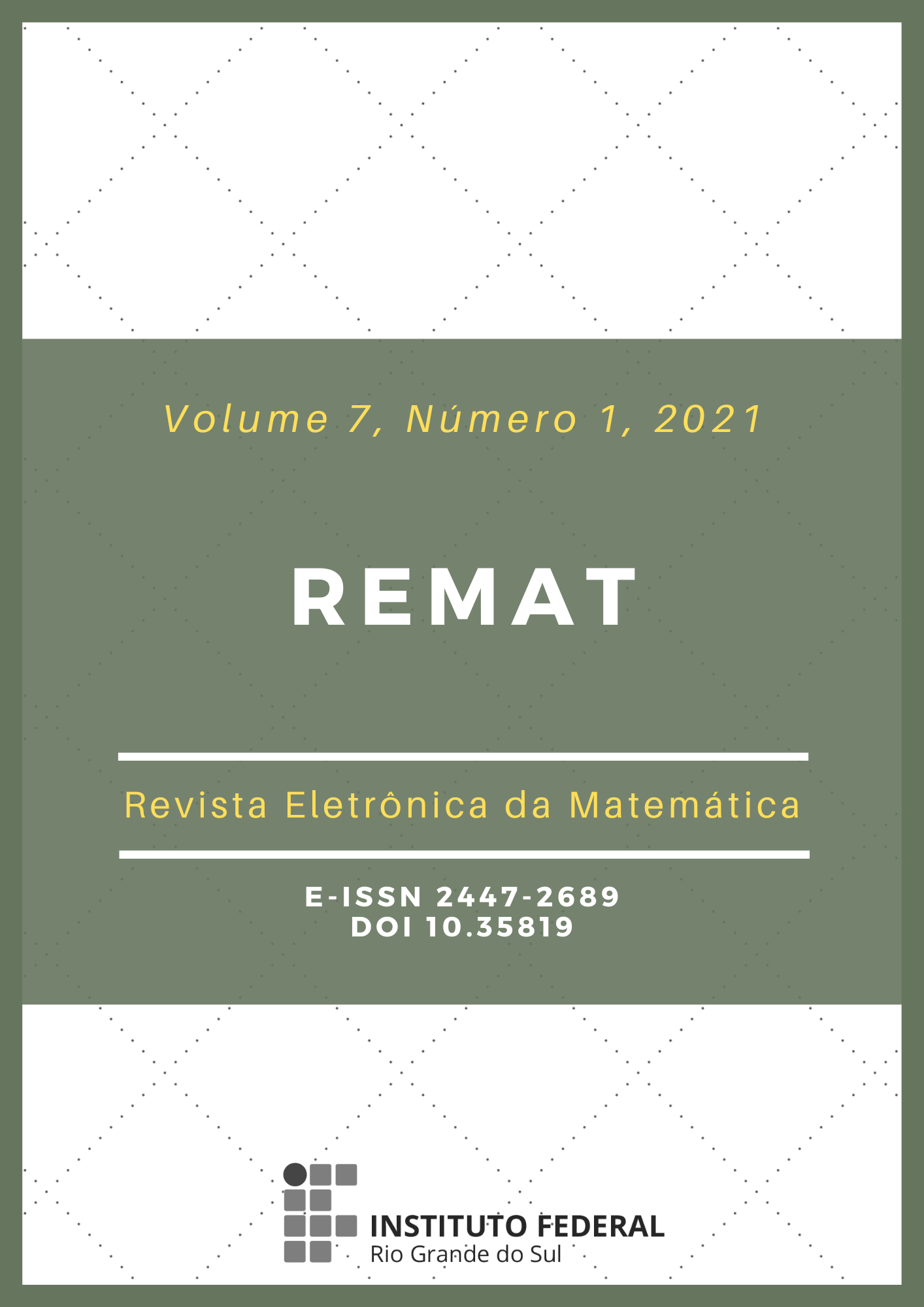Benford’s Law applied to COVID-19 confirmed case numbers in different countries
DOI:
https://doi.org/10.35819/remat2021v7i1id4586Keywords:
COVID-19, Numbers of Confirmed Cases, Benford’s Law, Frequency Comparison TestAbstract
Benford’s Law states that in sets of random numbers the prospect of the first digit of these numbers being 1 is greater than that of the following digits. Thus, the distribution proposed by Benford’s law shows that number 1 has approximately a 30.1% chance of being the first digit then the digit 2, with 17.6%, digit 3, with 12.5%, and so on, until number 9 is reached, having a 4.6% chance. In this context, the objective of the study is to verify whether this law applies to the numbers of confirmed cases of COVID-19 in different countries. The research, employing a quantitative method, treated and analyzed data collected on the World Health Organization (WHO) website, selecting the following countries, chosen randomly, according to the notoriety received in national and international media: China, Italy, New Zealand, Brazil and the United States of America (USA). To assess the discrepancy between the observed and expected relative frequencies, the frequency comparison test was used. The results found demonstrated that the numbers for China and New Zealand had calculated X² smaller than the critical X², while Italy, Brazil and the USA had calculated X² greater than the critical X², all at a 5% significance level. Consequently, it was concluded that Benford’s Law applied to the numbers of confirmed cases of COVID-19 disease in China and New Zealand, being rejected by the numbers of confirmed cases of COVID-19 disease in Italy, Brazil and the USA.
Downloads
References
BENFORD, F. The law of anomalous numbers. Proceedings of The American Philosophical Society, v. 78, p. 551-572, 1938. Disponível em: https://www.jstor.org/stable/984802. Acesso em: 01 jul. 2020.
CAMPOS, R. C; WODEWOTZKI, M. L. L.; JACOBINI, O. R. Educação Estatística: teoria e prática em ambientes de modelagem matemática. Coleção Tendências em Educação Matemática. 2. ed. Belo Horizonte: Autêntica, 2013.
CARMO, H.; FERREIRA, M. M. Metodologia da investigação: guia para auto-aprendizagem. 2. ed. Lisboa-PT: Universidade Aberta, 2008.
CUNHA, F. C. R. da. Aplicações da lei Newcomb-Benford à auditoria de obras públicas. Orientador: Maurício Soares Bugarin. 2013. 486f. Dissertação (Mestrado em Regulação e Gestão de Negócios) - Universidade de Brasília, Brasília, 2013. Disponível em: https://repositorio.unb.br/handle/10482/16379. Acesso em: 20 dez. 2020.
MEBANE, W. R. Election Forensics: vote counts and Benford’s Law. Papers, Posters and Syllabi, The Society Political Methodology, n. 620, 2006.
MEBANE, W. R. Note on the presidential election in Iran. Michigan: University of Michigan, 2009.
NEWCOMB, S. Note on the frequency of use of the different digits in natural Numbers. American Journal of Mathematics, v. 4, n. 1, p. 39-40, 1881. DOI: https://doi.org/10.2307/2369148.
NIGRINI, M. J. The detection of income tax evasion through an analysis of digital frequencies. Tese (Ph.D.) – University of Cincinnati, Cincinnati, OH. 1992.
NIGRINI, M. J. Digital analysis using Benford’s Law: Tests statistics for auditors. Global Audit Publication. Berlim, Heidelberg: Springer, 2000.
NIGRINI, M. J. Benford’s law. Applications for Forensic Accounting, Auditing and Fraud Detection. Hoboken, New Jersey: John Wiley & Sons, 2012.
OMS. World Health Organization. Disponível em: https://covid19.who.int/. Acesso em: 12 e 16 set. de 2020.
RAUCH, B.; BRÄHLER, G.; GÖTTSCHE, M.;ENGEL, S. Fact and fiction in EU-Governmental Economic Data. German Economic Review, v. 12, n. 3, p. 243-255, 2011. DOI: https://doi.org/10.1111/j.1468-0475.2011.00542.x.
Downloads
Published
Issue
Section
License
Copyright (c) 2021 REMAT: Revista Eletrônica da Matemática

This work is licensed under a Creative Commons Attribution 4.0 International License.
REMAT retains the copyright of published articles, having the right to first publication of the work, mention of first publication in the journal in other published media and distribution of parts or of the work as a whole in order to promote the magazine.
This is an open access journal, which means that all content is available free of charge, at no cost to the user or his institution. Users are permitted to read, download, copy, distribute, print, search or link the full texts of the articles, or use them for any other legal purpose, without requesting prior permission from the magazine or the author. This statement is in accordance with the BOAI definition of open access.













 https://orcid.org/0000-0002-0893-7426
https://orcid.org/0000-0002-0893-7426


















